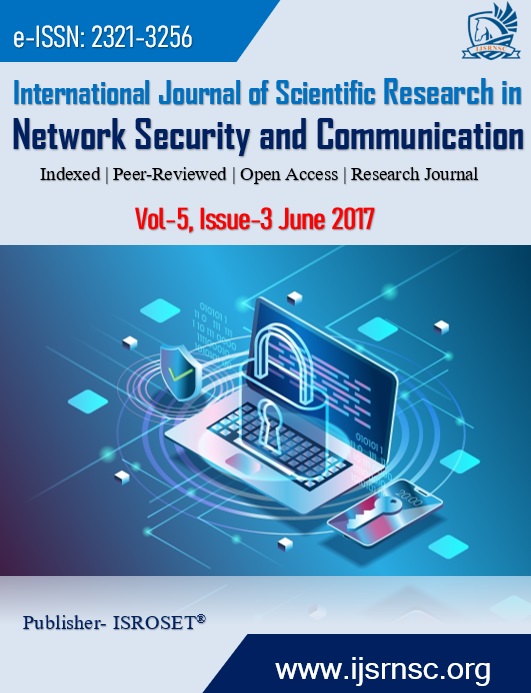An Improved Approch For Fraud Detection In Health Insurance Using Data Mining Techniques
Keywords:
Data Mining, Random Forest Algorithm, Health Insurance FraudAbstract
Nowadays there is huge amount of data stored in real world databases and this amount continues to grow fast. The major use of anomaly or outlier detection is fraud detection. Health care fraud leads to substantial losses of money each year in many countries. Effective fraud detection is important for reducing the cost of Health care system. Fraud and abuse on medical claims became a major concern for health insurance companies last decades. Fraud involves intentional deception or misrepresentation intended to result in an unauthorized benefit. It is shocking because the incidence of health insurance fraud keeps increasing every year. Data mining which is divided into two learning techniques viz., supervised and unsupervised is employed to detect fraudulent claims. Basically random forest algorithm and logistics regression algorithm techniques are used for fraud detection in health insurance. Data mining automatically filtering through immense amounts of data to find known/unknown patterns bring out valuable new perceptions and make predictions.
References
Fuzail Misarwala, KausarMukadam, and Kiran Bhowmick, “Applications of Data Mining in Fraud Detection”, International Journal of Computer Sciences and Engineering, Vol.3, Issue.11, pp.45-53, 2015.
Min Nelofar Kureshi, Syed Sibte Raza Abidi, “A Predictive Model for Personalized Therapeutic Interventions in Non-small Cell Lung Cancer”, IEEE Journal of Health Informatics Vol. 20, No.1, pp.424-431, 2016.
Vipula Rawte, G Anuradha, “Fraud Detection in Health Insurance using Data Mining Techniques”, International conference of ICCTCT, Mumbai, pp.66-71, 2015.
Melih Kirlidoga, Cuneyt Asuk(2012) “A fraud detection approach with data mining in health insurance”, Procedia Social and Behavioral Sciences, US, pp.989-994, 2012.
Dan Ventura, “ SVM Example”, BYU University of Physics and Mathematical Sciences, India, pp.1-25, 2009.
Shunzhi Zhu, Yan Wang, Yun Wu, “Health Care Fraud Detection Using Nonnegative Matrix Factorization”, The 6th International Conference on Computer Science and Education (ICCSE 2011), Singapore, pp.1-6, 2011.
Zhongyuan Zhang, Tao Li, Chris Ding, Xiangsun Zhang, “Binary Matrix Factorization with Applications”, Proceeding ICDM ’07 Proceedings of the 2007 Seventh IEEE International Conference on Data Mining Pages, China, pp. 391-400, 2007.
Mohammad Sajjad Ghaemi, “Clustering and Nonnegative Matrix Factorization”, Computer Science and Software Engineering Department- Laval University, Victor, pp.1-12, 2013.
Haesun Park, “Nonnegative Matrix Factorization for Clustering”, School of Computational Science and Engineering Georgia Institute of Technology Atlanta, USA, pp.1-36, 2012.
Fashoto Stephen G., Owolabi Olumide, Sadiku J., Gbadeyan Jacob A, “Application of Data Mining Technique for Fraud Detection in Health Insurance Scheme Using Knee-Point K-Means Algorithm”, Australian Journal of Basic and Applied Sciences, Vol.7, Issue.8, pp.140-144, 2013.
Williams, G., Huang, Z., “Mining the Knowledge Mine: The Hot Spots Methodology for Mining Large Real World Databases”, Proc. of the 10th Australian Joint Conference on Artificial Intelligence, Australia, pp.34-44, 1997.
Wong, W., Moore, A., Cooper, G. ,Wagner, M., “Bayesian Network Anomaly Pattern Detection for Detecting Disease Outbreaks”, Proc. Of ICML, UK, pp.217-223, 2013.
Anand, D. Khots, “A data mining framework for identifying claim overpayments for the health insurance industry”, INFORMS Workshop on Data Mining and Health Informatics”, India, pp.47-53, 2008.
L. J. Opit, “The cost of health care and health insurance in Australia: Some problems associated with the fee for-service”, Soc. Sci. Med., Vol.18, No.11, pp.967-972, 1984.
J. Major, D. Riedinger, “EFD: A hybrid knowledge/statistical based system for the detection of fraud”, Journal of Risk and Insurance, Vol.69, Issue.3, pp. 309-324, 2002.
V. Krishnaiah, G. Narsimha, N.S. Chandra, “Survey of Classification Techniques in Data Mining”, International Journal of Computer Sciences and Engineering, Vol.2, Issue.9, pp.65-74, 2014.
Divya Tomar, Sonali Agarwal, “A survey on Data Mining approaches for Healthcare”, International Journal of Bio- Science and Bio-Technology, Vol.5, Issue.5, pp.241-266, 2013.
Downloads
Published
How to Cite
Issue
Section
License

This work is licensed under a Creative Commons Attribution 4.0 International License.
Authors contributing to this journal agree to publish their articles under the Creative Commons Attribution 4.0 International License, allowing third parties to share their work (copy, distribute, transmit) and to adapt it, under the condition that the authors are given credit and that in the event of reuse or distribution, the terms of this license are made clear.









